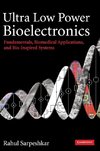
-
 Anglický jazyk
Anglický jazyk
Synchrotron-related techniques
Autor: Source: Wikipedia
Source: Wikipedia. Pages: 44. Chapters: Crystallography, Dynamical theory of diffraction, Extended X-ray absorption fine structure, Grazing-incidence small-angle scattering, Help Conquer Cancer, High-energy X-rays, Ligand K-edge, Metal K-edge, Metal L-edge,... Viac o knihe
Na objednávku, dodanie 2-4 týždne
16.92 €
bežná cena: 18.80 €
O knihe
Source: Wikipedia. Pages: 44. Chapters: Crystallography, Dynamical theory of diffraction, Extended X-ray absorption fine structure, Grazing-incidence small-angle scattering, Help Conquer Cancer, High-energy X-rays, Ligand K-edge, Metal K-edge, Metal L-edge, Momentum transfer, Powder diffraction, Racemic crystallography, Reciprocal lattice, Surface extended X-ray absorption fine structure, Synchrotron light source, Synchrotron radiation, Texture (crystalline), Ultrafast x-rays, X-ray absorption spectroscopy, X-ray crystallography, XANES. Excerpt: X-ray crystallography is a method used for determining the atomic and molecular structure of a crystal, in which the crystalline atoms cause a beam of X-rays to diffract into many specific directions. By measuring the angles and intensities of these diffracted beams, a crystallographer can produce a three-dimensional picture of the density of electrons within the crystal. From this electron density, the mean positions of the atoms in the crystal can be determined, as well as their chemical bonds, their disorder and various other information. Since many materials can form crystals-such as salts, metals, minerals, semiconductors, as well as various inorganic, organic and biological molecules-X-ray crystallography has been fundamental in the development of many scientific fields. In its first decades of use, this method determined the size of atoms, the lengths and types of chemical bonds, and the atomic-scale differences among various materials, especially minerals and alloys. The method also revealed the structure and function of many biological molecules, including vitamins, drugs, proteins and nucleic acids such as DNA. X-ray crystallography is still the chief method for characterizing the atomic structure of new materials and in discerning materials that appear similar by other experiments. X-ray crystal structures can also account for unusual electronic or elastic properties of a material, shed light on chemical interactions and processes, or serve as the basis for designing pharmaceuticals against diseases. In an X-ray diffraction measurement, a crystal is mounted on a goniometer and gradually rotated while being bombarded with X-rays, producing a diffraction pattern of regularly spaced spots known as reflections. The two-dimensional images taken at different rotations are converted into a three-dimensional model of the density of electrons within the crystal using the mathematical method of Fourier transforms, combined with chemical data known for the sample. P
- Vydavateľstvo: Books LLC, Reference Series
- Rok vydania: 2014
- Formát: Paperback
- Rozmer: 246 x 189 mm
- Jazyk: Anglický jazyk
- ISBN: 9781233115501











 Nemecký jazyk
Nemecký jazyk 
